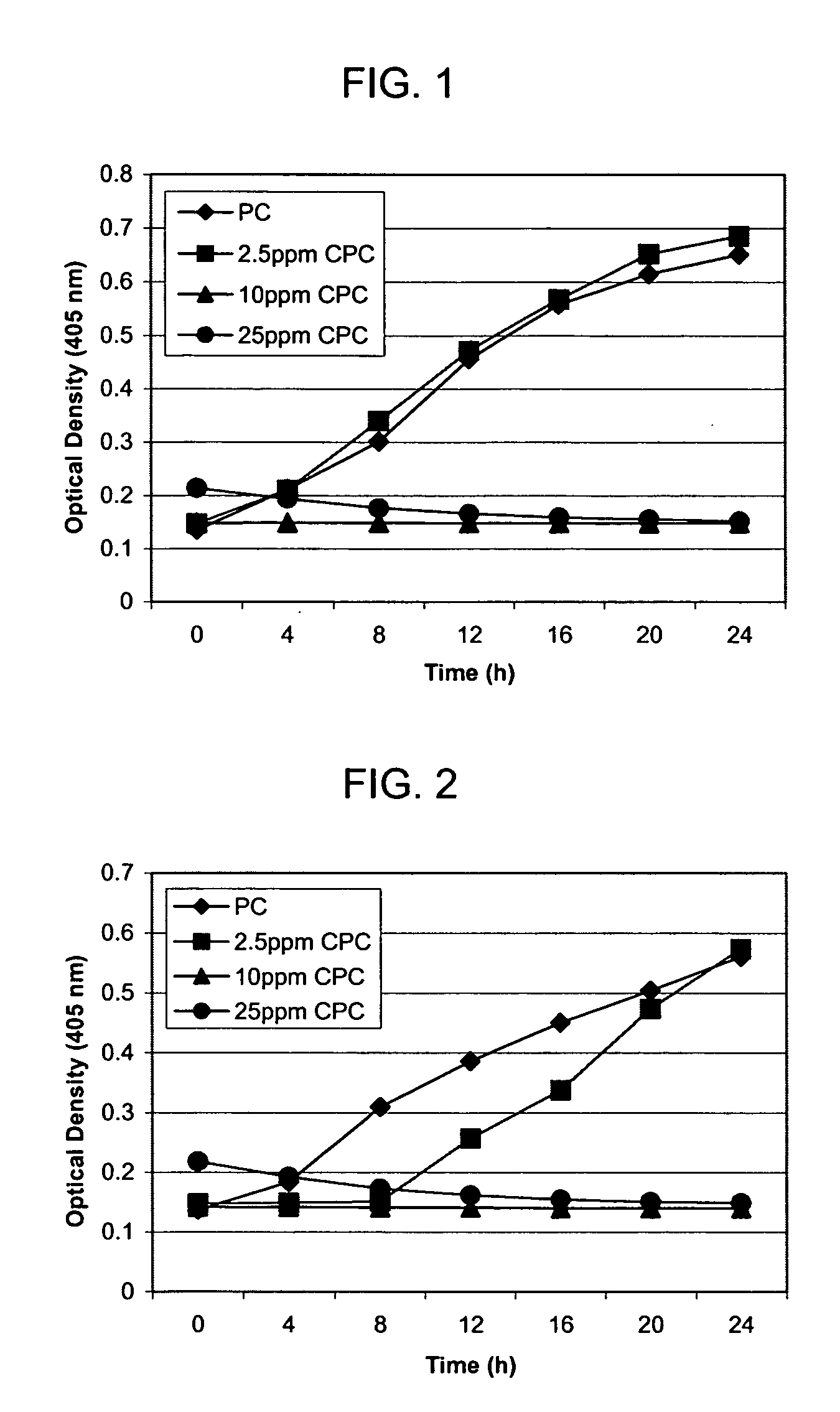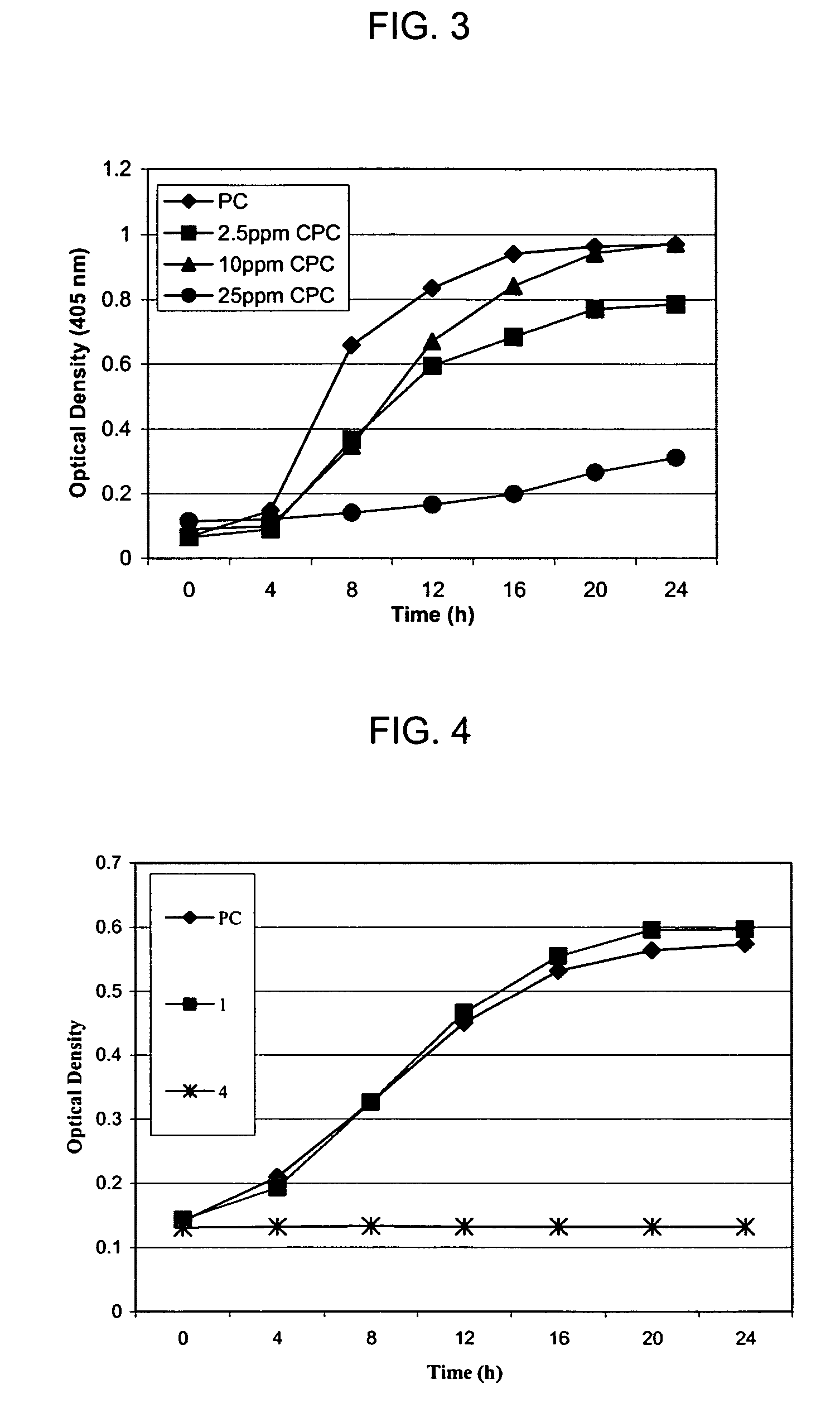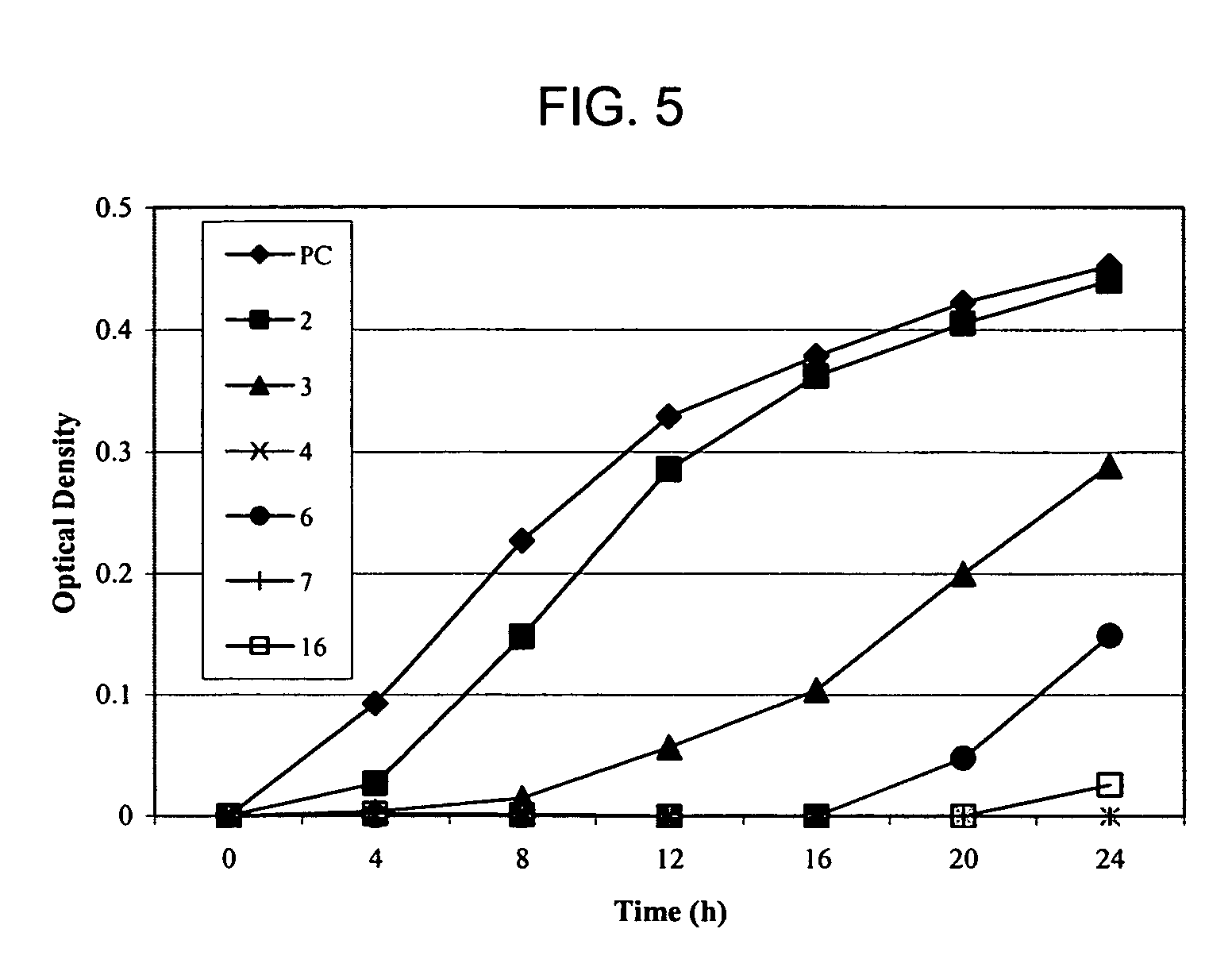Quaternary ammonium compounds in the treatment of water and as antimicrobial wash
a technology of ammonium compounds and water treatment, applied in water/sewage treatment by substance addition, heterocyclic compound active ingredients, biocide, etc., can solve the problems of adversely affecting the health and growth of animals, contaminating animal products intended as human food products, and contaminating feed and drinking water, so as to prevent growth, effective antimicrobial treatment, and effective antimicrobial treatment
- Summary
- Abstract
- Description
- Claims
- Application Information
AI Technical Summary
Benefits of technology
Problems solved by technology
Method used
Image
Examples
experiment 1
[0031] Five test organisms—Salmonella Enteritidis (ATCC 13076), Staphylococcus aureus (ATCC 25923), Candida castellii (field strain), and two laboratory mold cultures Aspergillus and Fusarium—were selected for use in the initial screening assays. Cetylpyridinium chloride (CPC) was obtained from Aceto Corporation. Bacterial cells were grown aerobically in Tryptic Soy Broth (TSB) for 24 h at 37° C. Yeast cells were grown in Potato Dextrose Broth (PDB) aerobically for 24 h at 37° C. Mold organisms were grown on Potato Dextrose Agar (PDA) at room temperature until sufficient sporulation was apparent. Test inocula were prepared to achieve a 106 cfu / ml suspension of bacterial cells and a 105 cfu / ml suspension of both yeast and mold spores. A Petroff Hausser counting chamber was used to determine the level of inoculum.
[0032] Poison Agar Assay. To evaluate the efficacy of CPC in mold inhibition, a poison agar assay was utilized. Sterile PDA was treated with CPC to achieve final treatment l...
experiment 2
[0039] Cetylpyridinium chloride (CPC) has been shown to be an effective inhibitor of microbial growth. Experiments were conducted to determine the synergistic effects of CPC in combination with propionic acid as an antimicrobial / pathogen reduction intervention in water.
[0040] Either a 3×3 or 4×4 matrix design was created to examine the effects of CPC and propionic acid against the growth of Salmonella Enteriditis, Staphylococcus aureus, E. coli O157:H7, and Listeria monocytogenes. The 4×4 matrix was either used in its entirety or in an abbreviated format as deemed appropriate by previous research conducted with similar organisms using a mixed organic acid blend.
[0041] Eight formulations were prepared using the incomplete 3×3 matrix design in Table 2. Eight combinations were prepared using 1, 5 and 10 ppm CPC and 50, 100 and 250 ppm propionic acid and given numeric identifications of 1-8. Positive and negative controls were included as described in Experiment 1.
TABLE 2A 3 × 3 mat...
experiment 3
[0050] Fifteen formulations were prepared using the incomplete 4×4 matrix design in Table 8. Fifteen combinations were prepared using 0, 1, 5 and 10 ppm CPC and 50, 100, 150 and 250 ppm of a mixture of organic acids product (Feed CURB®, Kemin Americas, Inc.) containing propionic acid, acetic acid, benzoic acid and sorbic acid, and given numeric identifications of 1-15.
TABLE 8A 4 × 4 matrix design of 15 combinations of CPCand mixed organic acidsOrganic Acids (ppm)CPC (ppm)5010015025001234156785910111210131415
[0051] Two test organisms—Salmonella Enteritidis (ATCC 13076) and E. coli O157:H7 (ATCC 35150)—were screened. Salmonella Enteritidis was grown aerobically in Nutrient Broth (NB) for 24 h at 37° C. E. coli was grown in NB for 6 h at 37° C. Test inocula were prepared to achieve a 106 cfu / ml suspension of bacterial cells. A Petroff Hausser counting chamber was used to determine the level of inoculum.
[0052] Experiments were conducted to determine the synergistic effects of CPC in ...
PUM
| Property | Measurement | Unit |
|---|---|---|
| temperature | aaaaa | aaaaa |
| temperature | aaaaa | aaaaa |
| weight | aaaaa | aaaaa |
Abstract
Description
Claims
Application Information
 Login to View More
Login to View More - R&D
- Intellectual Property
- Life Sciences
- Materials
- Tech Scout
- Unparalleled Data Quality
- Higher Quality Content
- 60% Fewer Hallucinations
Browse by: Latest US Patents, China's latest patents, Technical Efficacy Thesaurus, Application Domain, Technology Topic, Popular Technical Reports.
© 2025 PatSnap. All rights reserved.Legal|Privacy policy|Modern Slavery Act Transparency Statement|Sitemap|About US| Contact US: help@patsnap.com



